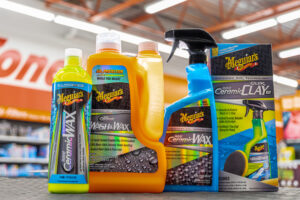Choosing between professional and DIY car waxing services can be crucial for vehicle appearance. Both methods have pros and cons, so the best one depends on your needs, preferences, and budget. Advanced professional and DIY car waxing techniques offer more options than ever for a stunning finish in 2024. This guide compares professional and DIY car waxing to help you choose.
Professional Car Waxing: Benefits
Expert car waxers use high-quality products and advanced techniques. Professional waxing’s expertise is a major benefit. Professionals have experience with premium and specialty waxes that DIYers may not have. They also have orbital buffers and heat lamps to improve waxing.
A professional waxing service usually requires extensive preparation. Before waxing, the paint is cleaned, decontaminated, and imperfections are addressed. A flawless finish and long-lasting protection result. Professional services also offer warranties or guarantees, ensuring a good job.
DIY Car Waxing: Benefits
DIY car waxing benefits those who like hands-on projects and saving money. Cost savings are a major benefit of DIY waxing. A one-time investment in products and tools makes DIY waxing cheaper than professional services. The right materials and techniques can yield impressive results at a fraction of the cost.
DIY waxing gives satisfaction and control. Choose your wax, try different techniques, and work at your own pace. This flexibility lets you customize the waxing process. DIY waxing can also teach you about car maintenance.
Comparing Costs
Cost matters when choosing between professional and DIY car waxing. Professional services cost $100–300, depending on wax type and complexity. This usually includes a thorough cleaning, polishing, and waxing.
Wax, applicators, microfiber cloths, and cleaning products must be purchased for DIY waxing. Although prices vary, these items are usually cheaper than professional services. A good DIY car wax kit costs $30–$60, plus cleaning products and tools.
Easy Application, Results
Professional car waxing is often better due to expertise and equipment. Professional waxers apply wax evenly and efficiently for a smooth, high-gloss finish. They can also correct paint imperfections and decontaminate clay bars.
Cost-effective DIY waxing may require practice to achieve similar results. Beginners may struggle to apply or remove wax evenly or without streaks. DIYers can achieve a high-quality finish with patience and the right techniques. DIY waxing can be improved by using high-quality waxes and proper application.
Keep and Last
The longevity of wax protection matters. Professional waxing uses high-quality products that last six months or more. Professionals can also use sealants or multiple layers to increase durability.
DIY waxing provides good protection but may need more applications to maintain results. The protection of most DIY waxes lasts 2–3 months, depending on driving and maintenance. Regular cleaning and care can extend wax life.
Conclusion
Your preferences, budget, and goals determine whether you choose professional or DIY car waxing in 2024. The expertise, convenience, and potential for better results make professional waxing a good choice for those who want a flawless finish and are willing to pay. For those who like hands-on projects and want to save money, DIY waxing offers cost savings, flexibility, and a sense of accomplishment.
When done right, both options can yield great results. Whether you hire professionals or do it yourself, proper preparation, application, and maintenance are essential for a beautiful, long-lasting vehicle finish.
FAQs
How often should I wax my car myself?
To keep your car shiny and protected, wax it every 2–3 months. Driving and environmental conditions affect this.
Can DIY waxing match professional results?
While professional waxing may be better due to expertise and equipment, DIY waxing can also be effective with practice and the right products.
Which wax is best for DIY car waxing?
Paste wax’s durability and ease of application make it ideal for beginners. Carnauba or beeswax-based homemade waxes work too.
Does DIY waxing have risks?
Uneven application, streaking, and damage from harsh chemicals or improper methods are risks. Always read instructions and test products on a small area.
How can I maintain my car’s finish between waxing?
Regular washing with a gentle car soap and detailing sprays can preserve your car’s finish and wax life. Do not use harsh chemicals or abrasives.




